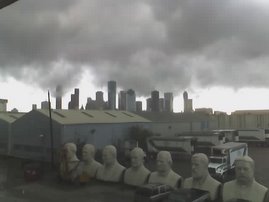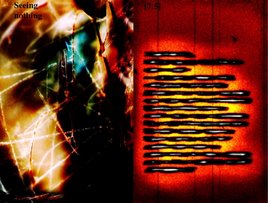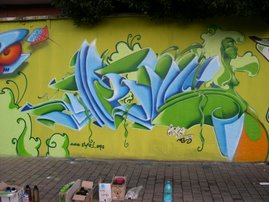I never really was a big poetry fan, though this one caught my imagination. It's by Percy Byshe Shelley and its theme is decay. The clever part of this, however, is that Ozymandais, 'The king of kings, Look on my Works ye mighty and despair' is a decaying statue in the 'desart', and as the work of the sculpture deteriorates and returns to the sand from which it was made so the syntax of the poem breaks up.
In many ways, and this is my take on this poem, this is about the cycle of life and death. Even though the statue was once sculpted for some great and powerful man, it is, nevertheles, rapidly returning to sand. It is, for me, an ashes to ashes work, it is actually a sonnet of fourteen lines, can't remember what type of sonnet that is, but think it is the 'classic' style that Shakespeare worked in, eight lines and then six - they had a name for them which I also forget, sorry - but they were different from Italian sonnets.
I really like the irony however, and, for me, it represents the rise and fall of empires, kings, queens, leaders and so on and reinforces the mortality that we all share, rich, poor, hungry. Shelley's great poem was the one on the Peterloo riots of 1819 and the guy was quite a liberal thinker for his time, a republican to boot, what was it he said about the last king being strangled by the entrails of somebody or other?
Sunday, 11 March 2007
Subscribe to:
Post Comments (Atom)









3 comments:
Sergei,
Will seek this out, read it, and get back to you...
Promise!
Axasha.
Wanted to respond to this by posting a painting by Cecil Collins, but thanks to the Tate’s miserly ways I cant. So…
Here’s the link instead:
http://213.121.208.204/servlet/ViewWork?cgroupid=999999876&workid=17835&searchid=11851
“In a small red boat, equipped with neither sails nor oars, six people with white, staring faces float among treacherous, blackened icebergs. This mysterious painting has been interpreted in different ways; in particular, it has been linked to TS Eliot's poem The Waste Land, and its references to Arthurian legend and the search for the Holy Grail. In general, Collins seems to have been concerned with the corrupting influence of the material world. This concern was gathering strength at the time he was working on this painting, in the autumn on 1938, on the eve of the Second World War.” © 2004(?), Tate Gallery
Axasha.
Wow, amazing painting
Post a Comment